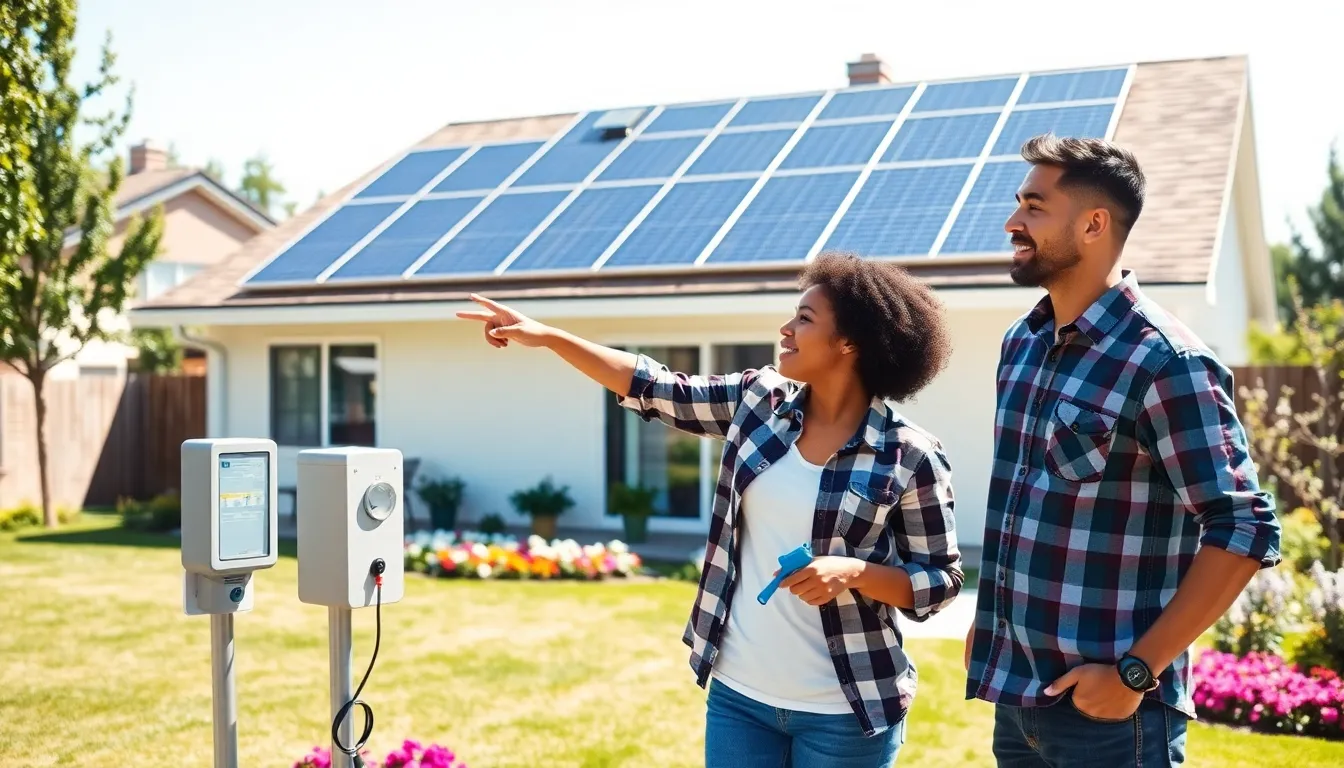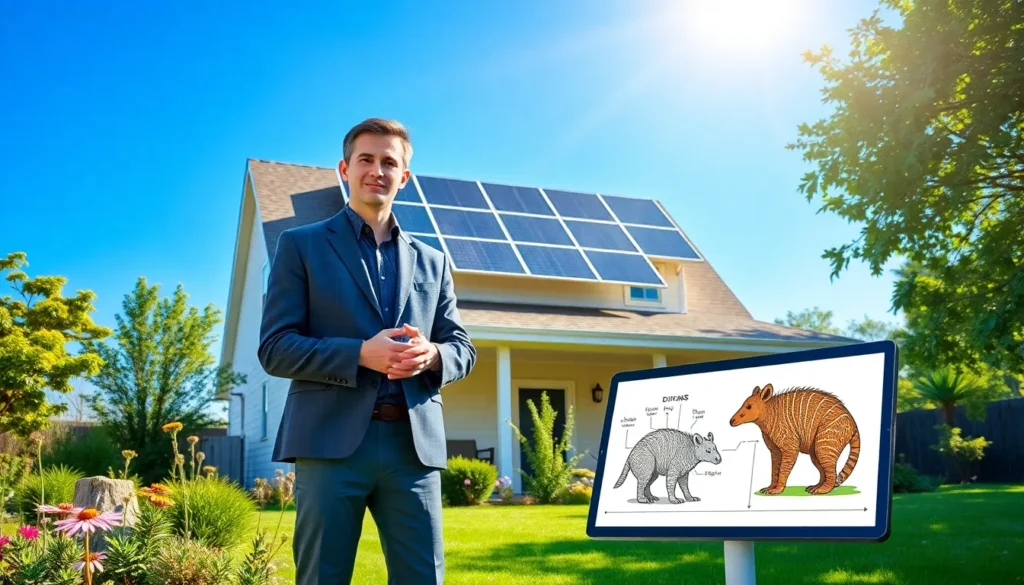Table of Contents
ToggleImagine a world where you can power your home using sunlight, all while doing your small part to save one of the coolest creatures on Earth, the pangolin. Sounds too good to be true, right? Welcome to the fascinating intersection of DIY solar projects and a passion for sustainability. In this text, we investigate into the brave new world of DIY solar setups with Homerocket Realty and sprinkle in a bit of pangolin magic. Grab your tools and let’s make solar energy a bit more relatable, eco-friendly, and perhaps, a tad humorous.
Understanding the DIY Solar Concept

DIY solar power involves harnessing energy from the sun through home-based installations. You don’t need to be a rocket scientist or an electrician to understand the basics. The core idea behind DIY solar is simple: You convert sunlight into electricity using photovoltaic panels. This process isn’t just a trend: it’s a statement about independence and sustainability. What’s remarkable about DIY solar systems is that they allow homeowners to take control of their energy consumption while significantly reducing their electricity costs. Not to mention the satisfaction of building something beneficial for the environment.
Benefits of DIY Solar Projects
Engaging in a DIY solar project brings a host of benefits. First, let’s talk numbers: solar energy can reduce electric bills by up to 80%. That’s a substantial chunk of change in today’s economy. There’s also the undeniable joy of self-sufficiency. When you create your own power, you become less dependent on grid systems and their fluctuating prices.
Also, DIY solar setups can raise property values. Homes equipped with solar panels are often seen as more desirable and can fetch higher prices in the real estate market. Plus, there’s the ever-appealing aspect of sustainability. Every watt generated from your solar panels translates into a step taken to combat climate change. And speaking of climate, let’s not forget that you’re giving Mother Earth a big bear hug.
The Role of Pangolins in Sustainable Practices
Pangolins are often overlooked in discussions about sustainability and conservation, yet these unique species play a significant role in their ecosystems. As insectivores, they consume vast amounts of ants and termites, promoting soil health and maintaining ecological balance. When discussing sustainability, incorporating the idea of protecting such species becomes vital.
By practicing sustainability, like installing DIY solar panels, homeowners contribute to reducing habitat destruction, which negatively impacts pangolin populations. Advocating for such eco-friendly practices allows individuals to align their energy projects with efforts to save our pangolin friends, making sustainability a shared responsibility.
Step-by-Step Guide to Creating a DIY Solar Setup
Choosing the Right Components for Your Solar Project
Selecting the right components is crucial for a successful DIY solar setup. Start with solar panels: there are numerous types available. Polycrystalline panels are cost-effective, while monocrystalline panels are slightly pricier but offer higher efficiency. It’s worth considering your space and budget when making a decision.
Next, don’t forget the inverter. This component is responsible for converting the direct current (DC) generated by your panels into alternating current (AC), which powers home appliances. Battery banks can also be an excellent addition if you want to store energy for nighttime or cloudy days.
Installation Tips for Optimal Performance
When installing your solar panels, orientation matters. Ideally, panels should face the sun for maximum exposure, which often means a southern alignment in the Northern Hemisphere. Ensure they are angled properly to capture the sun’s rays throughout the day.
Also, consider the shading from nearby trees or buildings. Even the best panels won’t perform well if obstructed by shadows. Finally, check local regulations before you get too carried away: some areas have specific rules about installation.
Common Challenges and Solutions in DIY Solar Projects
Like any ambitious project, DIY solar comes with challenges. Budget constraints can be a pain point. Start small: you don’t need to install an entire system in one go. Gradually adding components can help manage costs.
Another common hurdle is safety. Proper precautions must be taken during installation. Always tackle electrical connections with caution, and if needed, consult a professional for guidance. Weather can be unpredictable: always plan installations for clear days to avoid mishaps. Perseverance through these challenges can lead to a truly rewarding experience.
Integrating Eco-Friendly Practices with DIY Solar
Integrating eco-friendly practices doesn’t stop at your DIY solar project: it permeates your entire lifestyle. Consider reducing energy consumption by using energy-efficient appliances. Composting, recycling, and even switching to public transport help lower your carbon footprint.
Cultivating a beautiful native garden can also attract pollinators and improve local biodiversity. Every small change contributes to a greater shift towards sustainability. Embrace these practices, and alongside your solar project, watch as your sustainable lifestyle blossoms.




